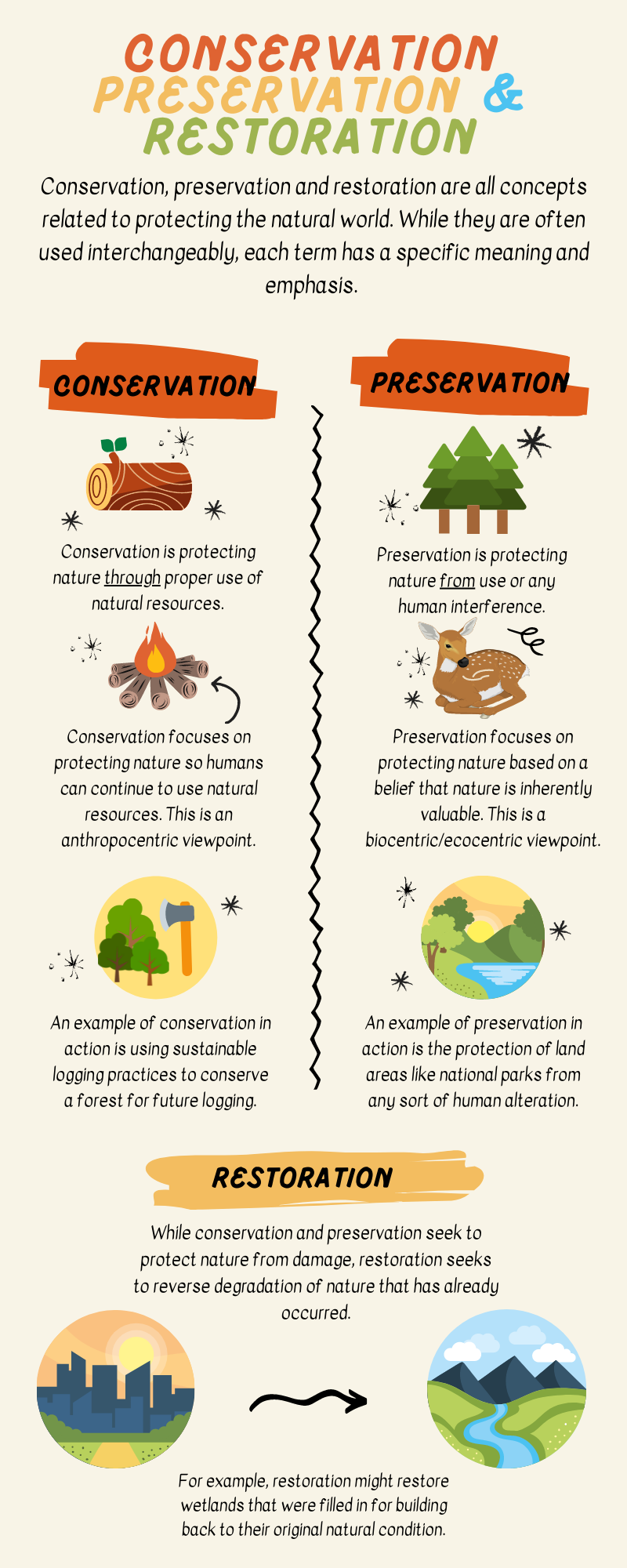Conservation vs. Preservation: The Hunter Ed Showdown You Need to See
The words “conservation” and “preservation” often get tossed around when discussing wildlife management and environmental stewardship. While both aim to protect our natural resources, they represent distinct philosophies and approaches. This article dives deep into the core differences between conservation and preservation, particularly through the lens of hunter education, helping you understand these crucial concepts and their impact on our world.
What is Conservation?
Conservation, at its heart, is about the sustainable use of natural resources. It emphasizes the responsible management of ecosystems to ensure that resources are available for future generations. Think of it as a balanced approach, acknowledging that humans can and will utilize natural resources while striving to minimize negative impacts and maintain healthy populations.
- Key Principles of Conservation:
- Sustainable Use: Resources are utilized at a rate that allows for their replenishment.
- Management & Planning: Active involvement in managing ecosystems, including habitat restoration, population monitoring, and regulated harvests.
- Multiple Uses: Conservation often allows for a variety of uses of the land and its resources, including hunting, fishing, timber harvesting, and recreation.
- Economic Considerations: Conservation efforts often consider the economic benefits derived from natural resources and how to balance these with environmental protection.
What is Preservation?
Preservation, on the other hand, focuses on protecting natural resources and ecosystems from human interference. It prioritizes leaving things as they are, with minimal intervention. The goal is to maintain the pristine condition of a specific area or resource.
- Key Principles of Preservation:
- Non-Use (or Minimal Use): Limiting or prohibiting human activities that could alter the natural state.
- Protection from Development: Preventing development, logging, mining, or other activities that could damage the environment.
- Focus on Ecosystem Integrity: Primarily concerned with maintaining the ecological processes and functions of the natural world.
- Emphasis on Wilderness: Often associated with designating areas as wilderness reserves, where human activity is strictly controlled.
Conservation vs. Preservation in Hunter Education: A Complex Relationship
The relationship between hunting and conservation is often debated, making hunter education a key battleground for these two philosophies.
Hunter Education and Conservation:
- Support for Sustainable Practices: Hunter education programs frequently emphasize responsible hunting practices that contribute to conservation, such as understanding bag limits, identifying wildlife, and following regulations.
- Funding for Conservation Efforts: Hunting and fishing licenses often generate significant revenue that goes directly towards funding conservation programs, habitat restoration, and wildlife management.
- Population Control: In some cases, regulated hunting is used to manage wildlife populations, preventing overpopulation and its negative impacts on ecosystems.
Hunter Education and Preservation:
- Ethical Considerations: Some preservationists may question the ethics of hunting, believing it inherently contradicts the goal of protecting wildlife from human interference.
- Habitat Protection: Hunter education can promote the importance of protecting and restoring habitats, which can align with preservationist goals.
- Debate on Land Use: The debate often centers around the balance of land use, between hunting and the preservation of wilderness areas.
The Importance of Both Approaches
While distinct, both conservation and preservation play vital roles in protecting our natural world.
Conservation’s Strengths:
- Allows for sustainable use of resources, providing economic and recreational benefits.
- Can be implemented across a wider range of landscapes.
- Focuses on active management, leading to healthier ecosystems.
Preservation’s Strengths:
- Protects pristine wilderness areas, maintaining biodiversity and ecological integrity.
- Provides opportunities for scientific research and understanding of natural processes.
- Offers a refuge for wildlife from human disturbance.
The Future: Finding Common Ground
The future of environmental stewardship likely involves finding common ground between conservation and preservation. This means:
- Collaboration: Working together to create effective management strategies.
- Balancing Interests: Acknowledging the legitimate concerns of all stakeholders.
- Adaptive Management: Being flexible and willing to adjust strategies based on scientific findings and changing conditions.
- Education and Awareness: Promoting a deeper understanding of the complexities of environmental issues.
Conclusion
Understanding the differences between conservation and preservation is crucial for anyone interested in wildlife management and environmental protection. Hunter education, as a platform for imparting knowledge about responsible hunting practices and the importance of habitat preservation, can play a vital role in fostering a balanced approach to environmental stewardship. By embracing both conservation and preservation principles, we can strive towards a future where both humans and nature thrive.
Frequently Asked Questions (FAQs)
1. Is hunting inherently harmful to the environment?
No, not necessarily. Properly managed hunting, guided by conservation principles, can be a tool for population control and habitat management, contributing to healthy ecosystems.
2. How does hunter education relate to conservation?
Hunter education often teaches responsible hunting practices, ethical considerations, and the importance of wildlife management, which are all core components of conservation.
3. What is the role of preservation in protecting wildlife?
Preservation protects pristine habitats, provides refuges for wildlife, and maintains biodiversity by minimizing human interference in certain areas.
4. Can conservation and preservation work together?
Yes! They can complement each other. Conservation can focus on sustainable use in managed areas, while preservation can protect wilderness reserves. Both are vital for a healthy environment.
5. What can I do to support both conservation and preservation?
Educate yourself on environmental issues, support organizations that promote both conservation and preservation, practice responsible outdoor recreation, and advocate for sustainable policies.




